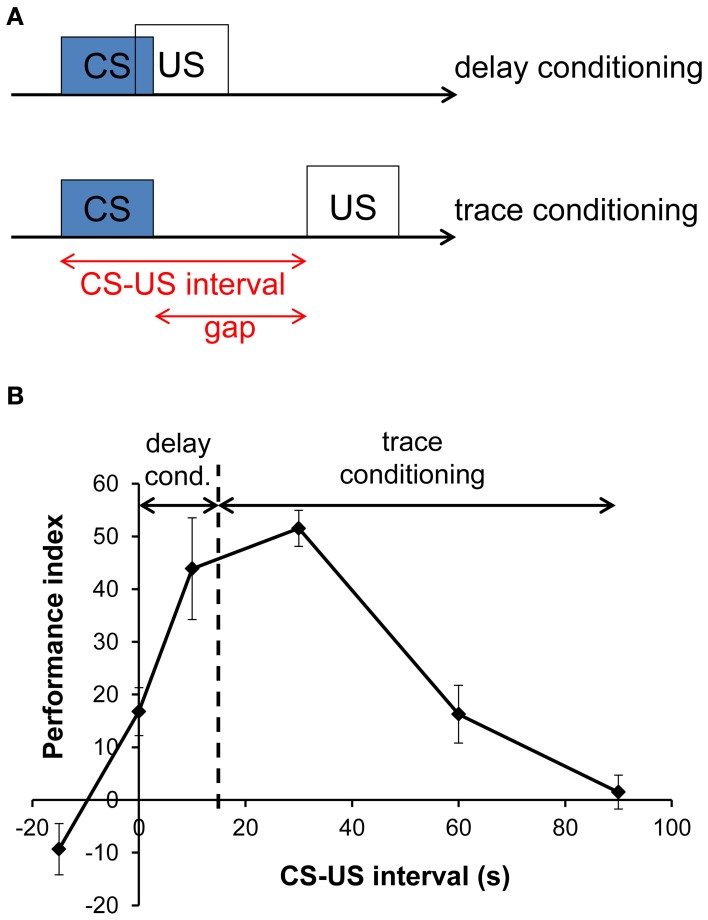Figure 1.
Experimental design and memory performance in delay and trace conditioning. (A) Experimental design of delay and trace conditioning. In delay conditioning, the conditioned stimulus (CS) and the unconditioned stimulus (US) overlap, whereas they are separated by a gap in trace conditioning. The time between the onset of the CS and the onset of the US is termed CS–US interval. (B) Memory performance after aversive olfactory conditioning in Drosophila melanogaster as a function of CS–US interval. Positive and negative scores indicate conditioned avoidance and conditioned approach, respectively. A 15 s long odor presentation serves as CS. Its end is indicated by a dashed line. The US consists of four electric shocks at 90 V applied within 16 s. Trials with a CS–US interval ≤15 s are termed delay conditioning and those with a CS–US interval >15 s are termed trace conditioning. Adapted from Tanimoto et al. (2004) with changes and with permission from the author.

